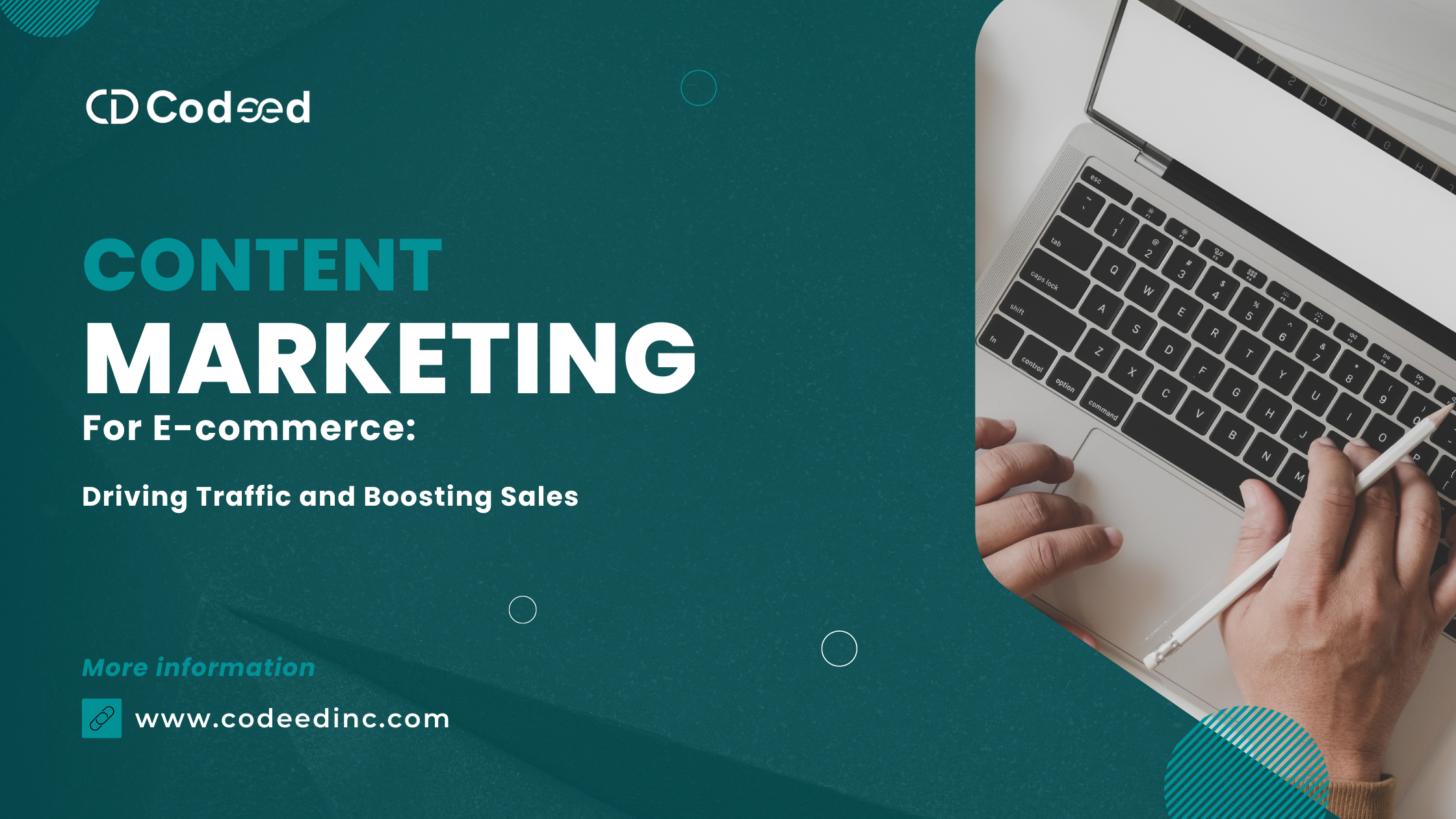Content Marketing for E-commerce: Driving Traffic and Boosting Sales

Content marketing is a powerful strategy for e-commerce businesses looking to attract, engage, and convert customers. By creating valuable, relevant content tailored to your audience, you can drive organic traffic to your website, build brand loyalty, and ultimately boost sales. In this comprehensive guide, we will explore the essential elements of content marketing for e-commerce and provide actionable steps to help you implement an effective strategy.
Understanding Content Marketing for E-commerce
Content marketing involves creating and distributing valuable content to attract and engage a target audience. For e-commerce businesses, this means producing content that not only promotes your products but also provides value to your customers. The key is to understand your audience’s needs and interests and create content that addresses these while subtly guiding them towards making a purchase.
1. Identify Your Target Audience
Create Buyer Personas
Develop detailed buyer personas to represent your ideal customers. These should include demographic information, purchasing behaviors, interests, and pain points. Understanding your audience helps you tailor your content to meet their specific needs.
Analyze Customer Data
Use analytics tools to gather data on your existing customers. Look at their behavior on your site, their purchase history, and how they interact with your content. This data can provide insights into what type of content resonates with them.
2. Develop a Content Strategy
Set Clear Goals
Define what you want to achieve with your content marketing efforts. Common goals include increasing website traffic, improving search engine rankings, boosting brand awareness, and driving sales. Having clear goals will guide your content creation process and help you measure success.
Choose Content Types
Decide on the types of content that will best engage your audience. Popular content types for e-commerce include:
- Blog Posts: Informative and educational articles related to your products or industry.
- Product Guides: Detailed guides that help customers make informed purchasing decisions.
- Videos: Product demonstrations, tutorials, and customer testimonials.
- Infographics: Visual content that presents information in an engaging way.
- User-Generated Content: Reviews, testimonials, and social media posts from your customers.
Create an Editorial Calendar
Plan your content creation and distribution schedule with an editorial calendar. This helps you stay organized and ensures consistent content delivery. Include important dates, such as product launches, holidays, and sales events, to align your content with your marketing campaigns.
3. Optimize Content for SEO
Conduct Keyword Research
Identify keywords that your target audience is searching for. Use tools like Google Keyword Planner, Ahrefs, or SEMrush to find relevant keywords with high search volume and low competition. Incorporate these keywords naturally into your content.
On-Page SEO
Optimize your content for search engines by following on-page SEO best practices:
- Title Tags: Create compelling, keyword-rich titles for your content.
- Meta Descriptions: Write concise meta descriptions that include relevant keywords.
- Header Tags: Use header tags (H1, H2, H3) to structure your content and make it easy to read.
- Internal Linking: Link to other relevant pages on your website to improve navigation and SEO.
- Alt Text: Include descriptive alt text for images to help search engines understand your content.
Content Quality
Ensure your content is high-quality, informative, and engaging. Search engines favor content that provides value to users. Avoid keyword stuffing and focus on creating content that addresses your audience’s needs and questions.
4. Promote Your Content
Social Media Marketing
Leverage social media platforms to share your content and reach a broader audience. Create engaging posts with eye-catching visuals and direct links to your content. Use relevant hashtags to increase visibility.
Email Marketing
Send regular newsletters to your email subscribers featuring your latest content. Personalize your emails to make them more relevant to each recipient. Include clear calls to action (CTAs) to drive traffic to your website.
Influencer Marketing
Collaborate with influencers in your industry to promote your content. Influencers can help you reach a larger audience and build credibility. Choose influencers whose followers match your target audience.
Paid Advertising
Invest in paid advertising to boost your content’s visibility. Platforms like Google Ads and Facebook Ads allow you to target specific demographics and interests. Use paid ads to promote high-value content, such as product guides or tutorials, to attract potential customers.
5. Measure and Analyze Results
Track Key Metrics
Use analytics tools to measure the performance of your content. Key metrics to track include:
- Website Traffic: Monitor the number of visitors to your site and which content is driving the most traffic.
- Engagement: Measure how users interact with your content (e.g., time spent on page, social shares, comments).
- Conversion Rates: Track how many visitors take desired actions, such as making a purchase or signing up for your newsletter.
- SEO Performance: Monitor your search engine rankings and organic traffic over time.
Adjust Your Strategy
Analyze your results to identify what’s working and what’s not. Use these insights to refine your content strategy. Experiment with different content types, topics, and promotion methods to see what resonates best with your audience.
Conclusion
Content marketing is a powerful tool for e-commerce businesses looking to attract, engage, and convert customers. By understanding your audience, creating valuable content, optimizing for SEO, and promoting your content effectively, you can drive significant traffic to your website and boost sales.
At Codeed Incorporate, we specialize in helping e-commerce businesses develop and execute successful content marketing strategies. Our team of experts can guide you through every step of the process, from audience research and content creation to SEO optimization and promotion.
Ready to elevate your e-commerce content marketing? Contact Codeed Incorporate today for a free consultation and discover how we can help you achieve your content marketing goals.
Call to Action: Reach out to us now and let Codeed Incorporate transform your content marketing strategy!
Table of Content
 5.0
5.0
Unlock your new design team today
Get a team of skilled professionals and all the benefits that come with top-grade in-house designers—for a flat fee.
Book a free call


